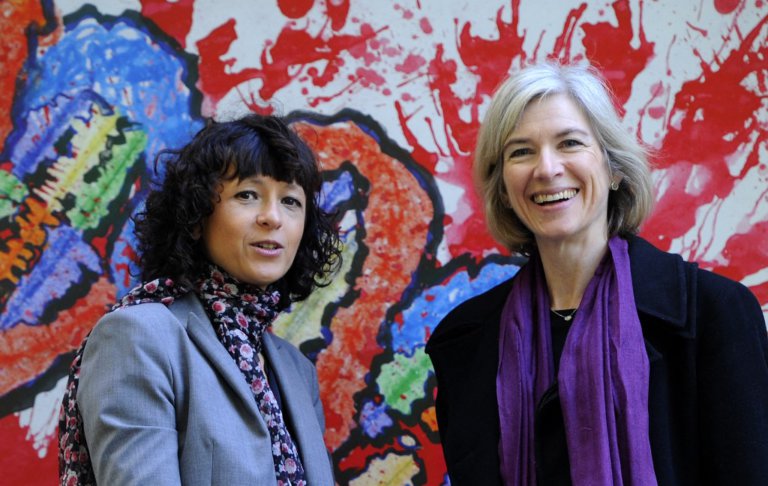
Are you a female student thinking of joining the science, technology, engineering, and mathematics (STEM) industry but finding it intimidating?
Don’t worry, though. In the ever-evolving landscape of STEM, women have played key roles in shaping its future.
From groundbreaking research to prestigious awards, female scientists, from as early as 7 BC, have left a mark on the world.
For all they’ve achieved, however, there’s no denying that the realm of STEM has been, for the longest time, dominated by men. And continue to be so.
The current statistics about women in STEM fields are proof of that.
Only 26% of the STEM workforce industry in the UK are women, according to the 2022 to 2023 data reported by STEM Women.
In the US, women in STEM are fewer and paid less than men in STEM jobs. In 2019, women made up 27% of STEM workers (although this was an 8% increase from 1970). The majority of these women in STEM are in healthcare, social science and life sciences.
In Australia, only 15% of women are in STEM occupations. They earn US$17,570than their male peers.
That being said, the tides have always been shifting. Women are continuously rewriting the narrative of what is possible, dismantling stereotypes, and reshaping the future of STEM.
In fact, we wouldn’t be where we are today if it wasn’t for a long line of pioneer women in STEM fields who stepped up and became game-changers.
How it all began for female scientists
If you need the perfect example, Salpe, an ancient Greek midwife from the first century BC, is your best bet.
History seems to show that Salpe may have been uneducated, but she was certainly full of wit, becoming a profound midwife known for her unusual yet unconventional remedies.
According to Shells, Tales and Sails, some of her remedies were feeding a live frog to a dog to stop it from barking, touching a patient’s upper eyelids to cure their numb or stiff limbs, and even treating sunburnt skin with urine and egg white (ostrich preferred).
However, these remedies were certainly not unusual during Salpe’s time. In fact, Salpe’s name was mentioned six times in Roman author and philosopher Pliny’s ‘Natural History’ paper, showing how much of a respected figure the midwife was.
And then we have Trota of Salerno, an Italian medical practitioner and medical writer from the early to middle decades of the 12th century.
Having studied in the Medical School of Salerno, the world’s first medical school, Trota became a highly skilled physician who specialised in women’s reproductive system and childbirth.
This made her as the world’s first gynaecologist. She later became a professor at the medical school, gaining the nickname “Magistra Medicinae.”
But her work did not stop there. She wrote a book on the diseases of women — which was considered to be very advanced for her time — leading to her fame spreading as far as France and England in the 12th and 13th centuries.
Enheduanna, the world’s first named author, is no different.
Sidney Babcock, curator of the New York City’s Morgan Library, said, “When people ask who is the first author, they never guess anyone in Mesopotamia, and it’s never a woman.”
A Mesopotamian poet, princess, and priestess, Enheduanna composed 42 temple hymns and three stand-alone poems, which played a big part in Mesopotamia’s literary legacy.
How is Enheduanna’s literary work relevant in STEM, you wonder? Well, reading Enheduanna’s poems will tell you about her solid grasp of mathematics — a necessary skill during Mesopotamia’s active agricultural and textile economy.
Lastly, you’d be amazed by Marie Crous, a French mathematician who introduced the decimal system to France in the 17th century.
However, she was not acknowledged for her discovery at the time.
If you hadn’t noticed, each woman mentioned above has initials that form the word “STEM” when put together. We wanted to introduce a woman who made significant contributions to her respective field through each alphabetical representation.
More importantly, these early trailblazers not only overcame societal barriers but also laid the foundation for the women who followed, from Marie Curie’s groundbreaking work in physics and chemistry to Barbara McClintock’s revolutionary genetic discoveries.
And if you didn’t already know, both Curie and McClintockare Nobel laureates! Only 16.3% of Nobel Prizes went to women.
But what about the current generation, you ask? Well, they are nothing short of extraordinary as well.
Here’s a look at the world’s top six women in STEM fields:
Women in STEM fields: 6 current game-changers in the industry

Dr. Jennifer Doudna is an American biochemist who has done pioneering work in CRISPR gene editing and made fundamental contributions to biochemistry and genetics. Source: AFP
1. Biology: Dr. Jennifer Doudna
Dr. Jennifer Doudna is a biochemist known for her groundbreaking work in the field of biology and, more specifically, for her co-discovery of CRISPR-Cas9 gene-editing technology, which allows for the modification of the genomes of living organisms.
She is the fifth woman to win a Nobel Prize in Chemistry.
Her contributions have revolutionised genetic research, offering unprecedented possibilities for gene therapy and disease treatment.

Dr. Sabrina Gonzalez Pasterski is an inspirational Cuban-American theoretical physicist from Chicago who studies high-energy physics. Source: AFP
2. Physics: Dr. Sabrina Gonzalez Pasterski
Dubbed “the next Albert Einstein,” Dr. Sabrina Gonzalez Pasterski is a theoretical physicist whose research explores topics like black holes, quantum gravity, and string theory.
In 2012, Pasterski, who was 19 at the time, was named one of “30 under 30” in a Scientific American column, thanks to countless accomplishments and accolades she received throughout her academic journey.
As a Harvard graduate and former Princeton PhD candidate, Dr Sabrina is recognised for her significant contributions to theoretical physics.
Even Stephen Hawking has cited three of her published papers.

Dr. Carolyn R. Bertozzi is an American chemist and Nobel laureate known for her wide-ranging work spanning both chemistry and biology. Source: AFP
3. Chemistry: Dr. Carolyn R. Bertozzi
Nobel Prize winner Dr. Carolyn R. Bertozzi is a renowned chemist whose work has advanced the field of bioorthogonal chemistry.
Bioorthogonal chemistry refers to a set of chemical reactions that can occur inside living organisms without interfering with natural biochemical processes.
Her contributions include the development of innovative chemical tools for studying biological systems.
One of the most brilliant women to exist, Dr. Bertozzi admitted that research and scientific developments require patience and acknowledgement that your work may only be recognised decades — and even after your passing.
“We always tell students: ‘We’re trying to get from A to B. Sometimes we end up at D. You don’t know what good that is, but you publish it anyway, and hopefully, somebody finds it interesting.
“Maybe 100 years from now, somebody makes a great discovery from that. If something isn’t good right now, it doesn’t mean it’s good for nothing,” she said, as quoted by Houston Chronicle.

Dr Fei-Fei Li is an American computer scientist known for establishing ImageNet, the dataset that enabled rapid advances in computer vision. Source: AFP
4. Tech: Dr. Fei-Fei Li
Born in China but raised in America, Dr. Fei-Fei Li is a leading computer scientist known for her work in artificial intelligence (AI) and computer vision.
As the co-director of Stanford University’s Human-Centered AI Institute, she has played a big role in advancing the ethical and inclusive development of AI technologies, ensuring their positive impact on society,
It’s little wonder why she’s dubbed one of the mothers of AI.
Most recently, Dr. Li released her memoir “The Worlds I See: Curiosity, Exploration, and Discovery at the Dawn of AI,” a moving book where she talks about her personal narrative as well as the history and development of AI.
Her book has received rave reviews for her captivating story about how a poor, immigrant Chinese girl could land in the US and end up at the forefront of a scientific revolution.
5. Engineering: Dr. Danielle Wood
Dr. Danielle Wood is an Assistant Professor and Director of the Space Enabled Research Group at MIT Media Lab.
Her work focuses on the intersection of space technology and sustainable development, aiming to leverage satellite technology for social and environmental good, particularly in developing regions.
In her TedTalk in 2018, Dr. Wood shared her mission of doing good through the use of space technology and becoming a well-respected figure in the industry.
“I’ve recently founded a new research group called Space Enabled. We are working to tear down these barriers that limit the benefits of space.
“And we’re also going to develop the future applications that will continue to contribute to sustainable development. We’ll keep on this work until we can truly say that space is for the benefit of all peoples, and we are all space-enabled,” she said.
What’s also notable is her extensive work background with NASA Headquarters, NASA Goddard Space Flight Centre, Aerospace Corporation, Johns Hopkins University, and the United Nations Office of Outer Space Affairs.
6. Mathematics: Dr. Maryna Viazovska
Dr. Maryna Viazovska is a mathematician known for her contributions to the field of number theory.
She made headlines by solving the 400-year-old eight-dimensional sphere-packing problem, a significant mathematical challenge, which also led to her becoming the second woman to be awarded the Fields Medal, dubbed as the Nobel Prize for mathematics.
Dr. Viazovska’s work has implications for various mathematical disciplines and has advanced our understanding of high-dimensional geometry.










